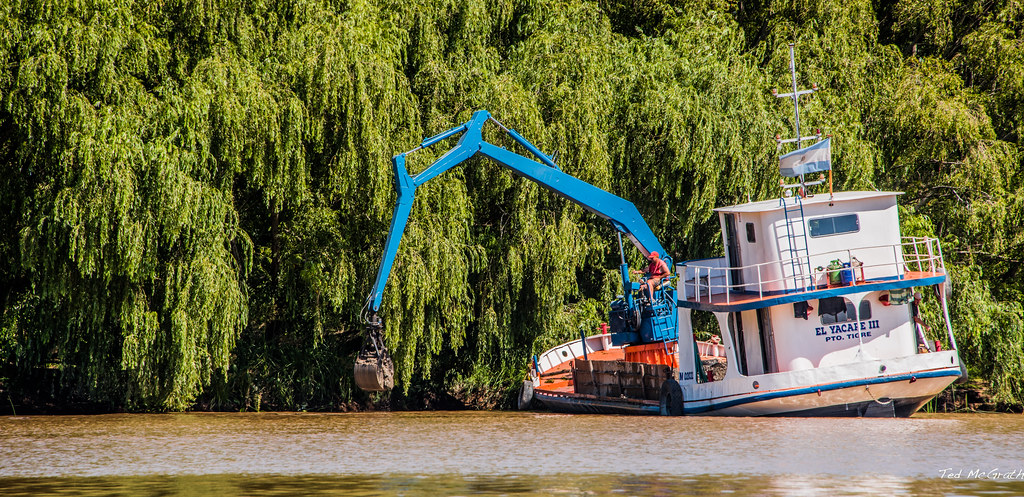Weeping willows grow at a fast pace of about 3-8 feet per year on average. These trees can reach a height of about 40 feet and a spread of 35 feet in optimal growing conditions.
Weeping willows, also known as salix babylonica, are popular ornamental trees due to their graceful, drooping branches and delicate foliage. They are deciduous trees and are known for their rapid growth rate, which makes them an excellent choice for providing privacy, shade, or windbreak.
With the right growing conditions, soil, sunlight, and water, weeping willows can grow quite fast, with an average growth rate of 3-8 feet per year. These trees have a unique and distinctive appearance, which makes them a popular landscaping choice in parks, gardens, and residential areas. In this article, we will explore the growth characteristics, requirements, and tips for planting and caring for weeping willows.

Credit: www.fast-growing-trees.com
Factors That Affect The Growth Rate Of Weeping Willows
Weeping willows are beautiful trees that are known for their gracefulness and elegance. These trees are popular all over the world, but how fast do they grow? Many factors affect the growth rate of weeping willows, including climate and weather, soil conditions, light conditions, and water availability.
In this blog post, we will explore these factors in further detail.
Climate And Weather
- Weeping willows are native to China and are best grown in a temperate climate. They typically prefer areas with hot summers and mild winters.
- These trees are tolerant of a wide range of weather conditions, including heat, cold, wind, and rain.
- However, extreme weather conditions such as drought or severe winter frost can impact their growth rate.
Soil Conditions
- Weeping willows grow best in soil that is moist, well-draining, and nutrient-rich.
- They typically do not grow well in soil that is too dry, too compact, or too alkaline.
- Regular fertilization and proper drainage are essential for maintaining healthy soil conditions.
Light Conditions
- Weeping willows require full sun to partial shade to grow properly.
- They can tolerate a moderate amount of shade but may not grow as quickly or vigorously under low-light conditions.
- In areas with hot climates, partial shade can help protect these trees from excessive sun exposure.
Water Availability
- Weeping willows are water-loving trees and require regular watering to thrive.
- They can tolerate temporary periods of drought but do best with consistent moisture.
- In areas with limited water availability, deep watering, and mulching can help preserve moisture in the soil.
As you can see, several factors affect the growth rate of weeping willows. By providing these trees with the appropriate soil, sunlight, water, and weather conditions, you can ensure that they grow healthy and strong. So, if you’re considering planting a weeping willow, be sure to keep these factors in mind to achieve the best results.
Understanding The Growth Stages Of Weeping Willows
Weeping willows are known for their droopy, elegant branches, and beautiful green leaves. They are fast-growing trees that can add life to any landscape. Understanding the growth stages of weeping willows can help you take care of them during each stage to ensure their growth and longevity.
In this section, we will explore the three growth stages of weeping willows: germination and establishment, young tree development, and maturity and senescence.
Germination And Establishment
The first stage in the growth of a weeping willow tree is germination and establishment. Here are some key points to remember during this stage:
- Weeping willow seeds are tiny and need to be planted in nutrient-rich soil to grow.
- The ideal time to plant weeping willow seeds is in the early spring when the soil is moist.
- It can take up to 10-14 days for weeping willow seeds to germinate.
- During this stage, it is crucial to keep the soil moist but not waterlogged.
- Once the weeping willow has developed its roots and leaves, it can be transplanted to its final location.
Young Tree Development
The second stage in the growth of a weeping willow tree is young tree development. Here are some key points to remember during this stage:
- Weeping willows can grow up to 6 feet (1.8 meters) per year during this stage.
- They need plenty of water and sunlight to continue growing rapidly.
- Pruning is recommended to maintain the tree’s shape and remove any damaged or dead branches.
- Fertilization is also recommended to ensure the tree is receiving the nutrients it needs to grow healthily.
Maturity And Senescence
The third stage in the growth of a weeping willow tree is maturity and senescence. Here are some key points to remember during this stage:
- A mature weeping willow can grow up to 50 feet (15 meters) tall with a spread of up to 35 feet (11 meters).
- Maintenance during this stage includes regular pruning and fertilization.
- As a weeping willow tree ages, it may start to decline and lose its lustrous green leaves as senescence sets in.
- Senescence is the natural aging process that all trees undergo, and it is irreversible.
Understanding the growth stages of weeping willows is crucial to their health and longevity. Proper care and maintenance during each stage can ensure that the tree grows to its full potential and adds beauty to any landscape it is planted in.
The Fastest Growing Weeping Willow Species
Weeping willows are not only aesthetically pleasing with their drooping branches but also grow remarkably fast. However, not all species grow at the same rate. In this blog post, we will delve into the fastest-growing weeping willow species, the salix alba.
Explanation Of Salix Alba
Salix alba is commonly known as the white willow, and it is a versatile and fast-growing tree that belongs to the Salicaceae family. The tree has narrow and elongated leaves, which can grow up to 10 centimeters long, and 2.
5 centimeters wide. The salix alba’s name originated from the white-grey color of the bark, which can be smooth or fissured depending on maturity.
The salix alba has been in use for thousands of years and has gained popularity because of its medicinal properties. It has been used to alleviate headaches, relieve back pain, and reduce fever symptoms. As if that isn’t impressive enough, the Salix alba also has great potential as a renewable energy source.
How It Compares To Other Weeping Willow Species
Weeping willows come in different species, and each species has its unique properties, including growth rates. Here are some features of Salix alba that make it the fastest-growing species.
- The tree is resilient and can withstand a wide range of growing conditions.
- It can grow up to 8 feet in a single year.
- The tree can grow in both wet and dry regions.
- Salix alba can survive in temperatures as low as -47 °f (-44 °c) and in exposed and windy sites.
In comparison, some of the slowest-growing weeping willow species include the babylonica and sepulchral. It takes the babylonica approximately five years to grow to a height of 20 feet, while the sepulchral takes about ten years to reach the same height.
If you are looking for a fast-growing and low-maintenance tree species to add to your garden, the salix alba should be at the top of your list. Its properties and growth rates are unmatched, and the tree will thrive in various soil conditions.
Plant one today and watch as its weeping branches add some drama and charm to your outdoors.
Frequently Asked Questions On How Fast Do Weeping Willows Grow
How Fast Do Weeping Willows Grow?
Weeping willows grow at a rapid rate of 3-8 feet per year. In ideal conditions, they can grow up to 40 feet tall and wide in 20 years. However, the growth rate varies depending on factors like soil type, climate, and pruning frequency.
How Often Should I Water My Weeping Willow?
Young weeping willows need frequent watering to establish their roots. You should water deeply twice a week during the first growing season. After that, they can tolerate drought conditions and only require watering during prolonged dry periods.
How Do I Prune Weeping Willows?
Weeping willows require pruning to maintain their shape and size. You should prune them in late winter or early spring before the buds emerge. Cut off the dead, diseased, and crossing branches. Always sterilize pruning tools to prevent the spread of diseases.
Conclusion
As you can see, weeping willows are stunning trees that add beauty to any landscape. Understanding their growth habits is essential in caring for them properly. With the right soil, water, and sunlight, these trees can grow up to two feet each year, and sometimes more, depending on their environment.
However, as with any tree, it is essential to understand that growth is not instantaneous, and it takes time and patience to achieve the desired outcomes. As such, nurturing and feeding these trees with the proper nutrients and care can help promote their growth and health.
While the growth rate might vary, weeping willows’ beauty and elegance are undeniable. With their long, draping branches that sway in the breeze, these trees provide a serene and welcoming environment for all to enjoy.
Related articles:
Insect Invasion: Threat to Utah’s Fir Forests
 Dr Ahsanur Rahman, PHD
Dr Ahsanur Rahman, PHD
UK Forests Collapse Imminent: Act Now Against Climate!
 Dr Ahsanur Rahman, PHD
Dr Ahsanur Rahman, PHD
Lightning Strikes Threat: Boreal Fires Jeopardize Carbon
 Dr Ahsanur Rahman, PHD
Dr Ahsanur Rahman, PHD







